AI Guides
AI vs. AGI: Key Differences You Should Know
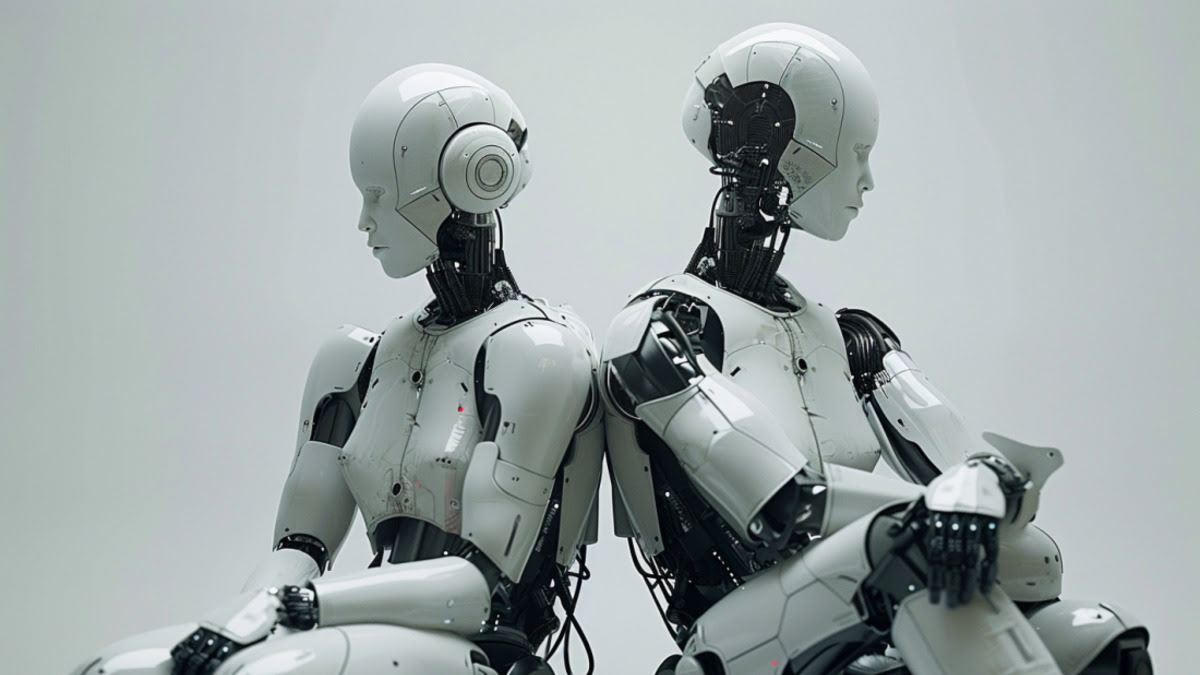
Artificial Intelligence, or AI, is something many of us interact with every day. Think of it like the smart assistants on your phone or the recommendation systems that suggest what videos to watch next online. These systems are designed to perform specific tasks really well — from understanding your voice commands to finding patterns in data to make predictions.
On the other hand, Artificial General Intelligence (AGI) is like the science fiction AI you see in movies — an advanced machine with the ability to understand, learn, and apply knowledge across a wide range of tasks, just like a human would. Imagine a robot that could go to school, learn subjects like math or history, make friends, and then come home to help you cook dinner!
In this article, we’ll compare these two, looking at how they work, what they can do, and what the future might hold for both AGI and AI. Whether you’re just curious about these technologies or thinking about a future career in tech, understanding these differences is key to grasping how artificial intelligence is shaping our world. Let’s get started!
What Is Artificial Intelligence?
Artificial Intelligence, often simply referred to as AI, is a branch of computer science that focuses on creating machines capable of performing tasks that typically require human intelligence. These tasks include learning from experiences, recognizing patterns, understanding languages, and making decisions. AI systems are designed to handle specific problem-solving or reasoning tasks and are embedded in various devices and software applications that we use daily.
AI can be as simple as a computer program that plays chess or as complex as a voice recognition system that interprets and responds to speech. These systems rely on algorithms and machine learning—a subset of AI where machines learn from data to improve their performance over time without being explicitly programmed for each task. This ability to adapt and learn makes AI incredibly powerful in fields such as healthcare for diagnosing diseases, in finance for trading stocks, or in customer service as chatbots.
In essence, AI integrates the intricacies of machine learning, neural networks, and big data analytics to mimic human thought processes, albeit within the confines of the specific functions it’s been programmed to achieve. This focused intelligence is what sets AI apart from our broader, more adaptable human intelligence, and it’s what makes it such a valuable tool in advancing technology and efficiency in multiple sectors.
Examples of Artificial Intelligence
Artificial Intelligence (AI) manifests in many forms across different sectors, improving efficiency, accuracy, and usability. Here are some common examples of how AI is currently being used:
- Virtual Personal Assistants: Devices like Amazon Alexa, Google Assistant, and Apple Siri use AI to interpret and respond to user commands, helping with tasks like scheduling appointments, controlling lights, playing music, or providing weather updates.
- Autonomous Vehicles: AI powers self-driving cars, such as those developed by Tesla and Waymo. These vehicles use AI to perceive the environment around them and make driving decisions that would typically require a human driver.
- Recommendation Systems: Streaming services like Netflix and Spotify use AI to analyze your preferences and watching or listening habits to recommend movies, shows, or music you might enjoy.
- Fraud Detection: Financial institutions employ AI to spot patterns indicative of fraudulent activities. AI systems can analyze transaction data at scale and flag unusual behavior much faster than human auditors.
- Healthcare: AI applications in healthcare include robot-assisted surgeries and virtual nursing assistants. AI is also used to analyze data from medical records to predict disease progression and outcomes.
- Smart Home Devices: AI is integral to smart home technology, optimizing energy use, security, and comfort. Systems can learn residents’ schedules and preferences to control heating, cooling, and lighting efficiently.
- Customer Service Chatbots: Many businesses use AI-driven chatbots on their websites to provide instant responses to customer inquiries. These chatbots can handle a wide range of questions, reducing the need for human customer service representatives.
What Is Artificial General Intelligence (AGI)?
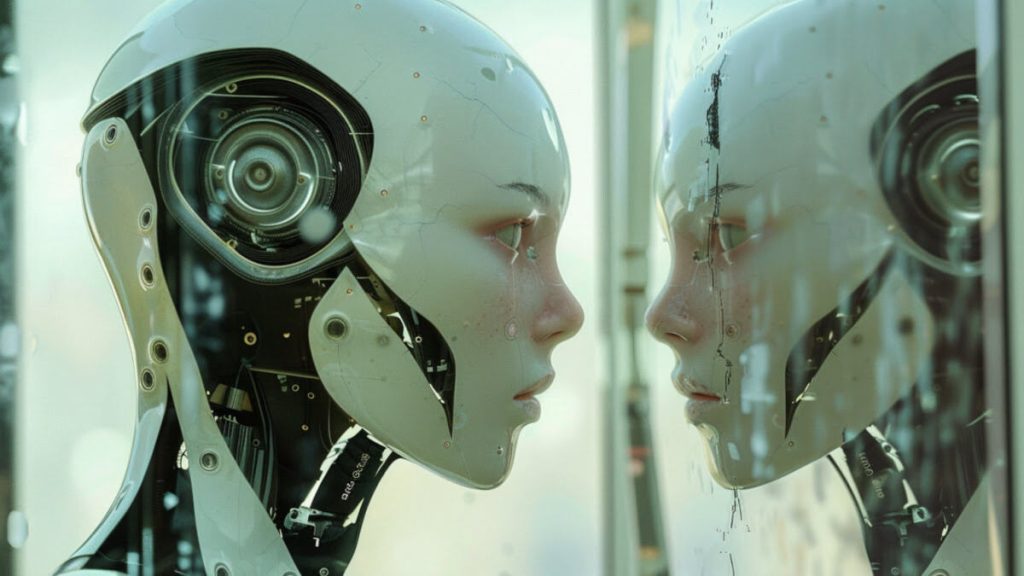
Artificial General Intelligence (AGI), often referred to as general AI or advanced general intelligence, represents a type of artificial intelligence that can understand, learn, and apply knowledge across a broad range of tasks, much like a human being. Unlike narrow AI, which is designed to perform specific tasks (such as voice recognition or internet searches), AGI has the capability to solve many types of problems and perform activities that require human-like intelligence.
AGI is a concept largely rooted in the realm of theoretical research, with no fully functional AGI systems existing today. However, the pursuit of AGI is a central goal for many researchers and developers in the field of artificial intelligence. The development of AGI would mark a significant breakthrough, enabling machines to perform complex reasoning and decision-making across various domains without task-specific programming.
Characteristics of AGI include:
- Adaptability: AGI systems would be capable of learning from experiences and adapting to new situations in ways that mimic human cognitive flexibility.
- Generalization: The ability to generalize from one situation to another is a hallmark of human intelligence, which AGI aims to replicate, allowing it to perform well across diverse tasks.
- Understanding Context: AGI would have the ability to understand context and make judgments about the relevance and significance of various pieces of information, similar to human reasoning.
Researchers and companies working toward AGI are exploring a variety of approaches, including but not limited to deep learning, cognitive architectures, and hybrid models that incorporate elements of both machine learning and human-like reasoning structures. While the realization of true AGI is still a subject of debate and research, it represents a significant point of interest in the study of artificial intelligence, promising a future where machines could potentially think and interact in ways that are currently limited to human capabilities.
Examples of Artificial General Intelligence
As of now, true Artificial General Intelligence (AGI) does not exist; however, there are several theoretical concepts, hypothetical models, and research projects aimed at developing AGI. These examples help us understand the direction in which AGI research is headed and the potential capabilities of such systems:
- OpenCog: A project aimed at creating a framework for integrated Artificial General Intelligence (AGI) through an open-source platform that incorporates various AI methodologies like natural language processing, machine learning, and cognitive modeling to achieve general intelligence.
- Human Brain Project: While not aiming for AGI directly, this ambitious European research project seeks to simulate the complete human brain on supercomputers to better understand brain function and apply this knowledge to developing intelligent systems, potentially contributing to AGI development.
- DeepMind’s AlphaZero: Although primarily an example of advanced machine learning within a specific domain (games), AlphaZero represents a step toward AGI by demonstrating the ability to master multiple complex games like chess, Go, and Shogi through self-learning, without human data input, showing an adaptable learning capability that is a crucial aspect of AGI.
- MIT AGI: This research project by MIT focuses on developing AGI that can learn from experience, interact with the world, think, and plan effectively. The initiative explores the cognitive and computational bases necessary for building such systems.
- Ben Goertzel’s AGI Theories: Ben Goertzel, one of the pioneers in the AGI field, works on various theoretical and practical approaches to AGI, including the OpenCog project, and advocates for a multi-algorithmic approach to achieve true general intelligence in machines.
Key Differences Between AI and AGI
Now that you have a general idea of what AI and AGI is, let’s go over the key differences that set them apart.
Scope of Intelligence and Application
AI (Artificial Intelligence): AI is designed to excel in specific tasks through programmed algorithms and data-driven models. This type of intelligence is often referred to as narrow AI or weak AI, as it operates within a confined set of parameters and contexts. Examples include speech recognition systems, image analysis tools, and recommendation engines that exhibit a form of “intelligence” in processing and decision-making related to specific functions.
AGI (Artificial General Intelligence): AGI, on the other hand, embodies a type of intelligence that mirrors human cognitive abilities. It can understand and learn any intellectual task that a human being can. AGI is not limited to a single narrow task but is capable of reasoning, solving problems, planning, learning, and communicating in a way that is indistinguishable from a human. This level of intelligence has not yet been achieved and remains a theoretical concept in the realm of advanced general intelligence.
Adaptability and Learning
AI: Most AI systems are designed for specific environments and are not capable of adapting to new contexts without retraining or redesign. They operate based on the data they were trained on and the specific algorithms they were programmed with. For example, an AI trained to identify objects in photographs might not perform well on voice recognition tasks unless specifically designed or retrained for that purpose.
AGI: A hallmark of AGI is its adaptability. AGI would be able to apply intelligence across a range of tasks, learning from new experiences and environments without being explicitly reprogrammed. AGI encompasses the ability to transfer knowledge across different domains, a key aspect of human intelligence.
Developmental Complexity and Ethical Considerations
AI: The development of AI involves complex data, algorithms, and computing power, focusing on enhancing performance in particular tasks. While AI raises ethical questions regarding privacy, bias, and decision-making, these are generally confined to specific applications of the technology.
AGI: The pursuit of AGI raises profound ethical, philosophical, and safety-related questions. The development of an intelligence that could potentially match or surpass human cognitive abilities poses unique challenges, including existential risks, the potential for unforeseen behaviors, and the ethical implications of creating entities with possible personhood or consciousness.
Technological and Theoretical Status
AI: AI is a well-established field in computer science with numerous applications in the real world today. Technologies like machine learning and neural networks have propelled AI into critical roles across industries, from healthcare to finance to entertainment.
AGI: In contrast, AGI remains largely theoretical and speculative. While there are ongoing research and discussions about how to achieve AGI, including through projects like OpenCog and initiatives by AI research organizations, no functional AGI system exists currently. The concept of AGI is associated with future advancements that could eventually lead to breakthroughs in creating machines with general cognitive capabilities.
Impact on Society and Industry
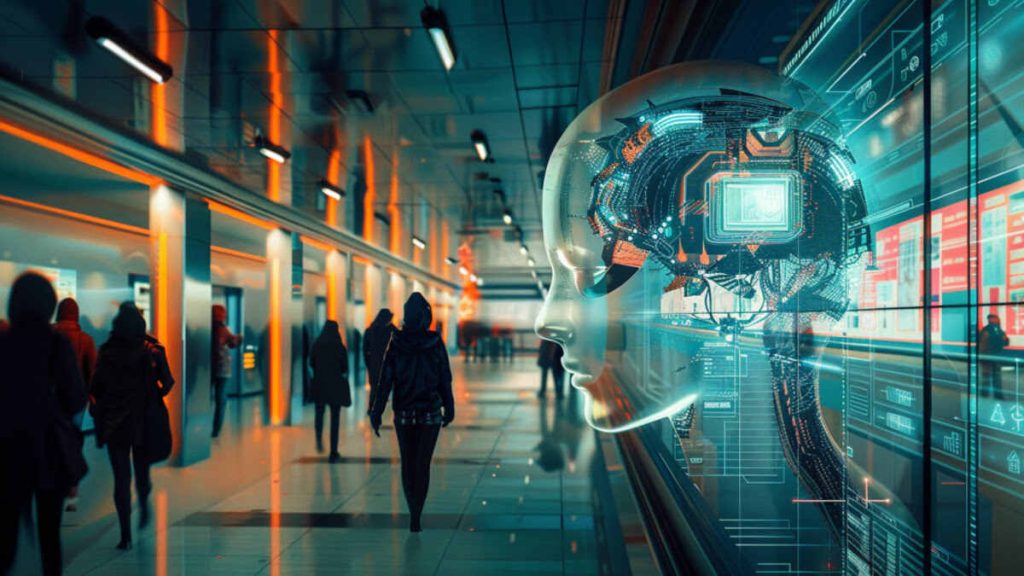
AI: AI’s impact is already evident across various sectors, automating tasks, enhancing data analytics, and improving efficiency. Its integration into industries has been transformative, but also manageable within existing frameworks of regulation and control.
AGI: The potential impact of AGI is broader and more profound. It promises—or threatens—to reshape industries and societal structures fundamentally. The advent of AGI could lead to significant shifts in employment, security, and social dynamics due to its unprecedented versatility and capability.
In summary, while AI continues to advance and integrate into our daily lives and business processes, AGI remains a distant and more revolutionary prospect. Understanding these differences helps in navigating the current landscape of technology and preparing for future developments that could redefine what it means to be intelligent.
AI vs. AGI: The Future of Intelligent Systems
In our exploration, we differentiated between Artificial Intelligence (AI) and Artificial General Intelligence (AGI), highlighting their distinct roles and potential impacts. AI, already a transformative force, is specific to particular tasks and deeply integrated across multiple sectors, automating functions and enhancing efficiency. AGI, though still theoretical, represents a future where machines could match human cognitive abilities across diverse scenarios.
As AI continues to evolve, it pushes the boundaries of machine capability, while the concept of AGI invites us to consider broader implications, including ethical and safety concerns. Understanding these differences is crucial as we prepare for advanced technologies that could redefine human-machine interaction. The journey ahead with AI and AGI promises innovations that could further augment human capacities and solve complex challenges, underscoring the importance of navigating their development thoughtfully and responsibly.

AI Guides
AI Music Production 2025: Pro Tools & Techniques
Explore cutting-edge AI tools for music production. Compare top solutions for sound design, mixing, and mastering with expert insights and pricing.
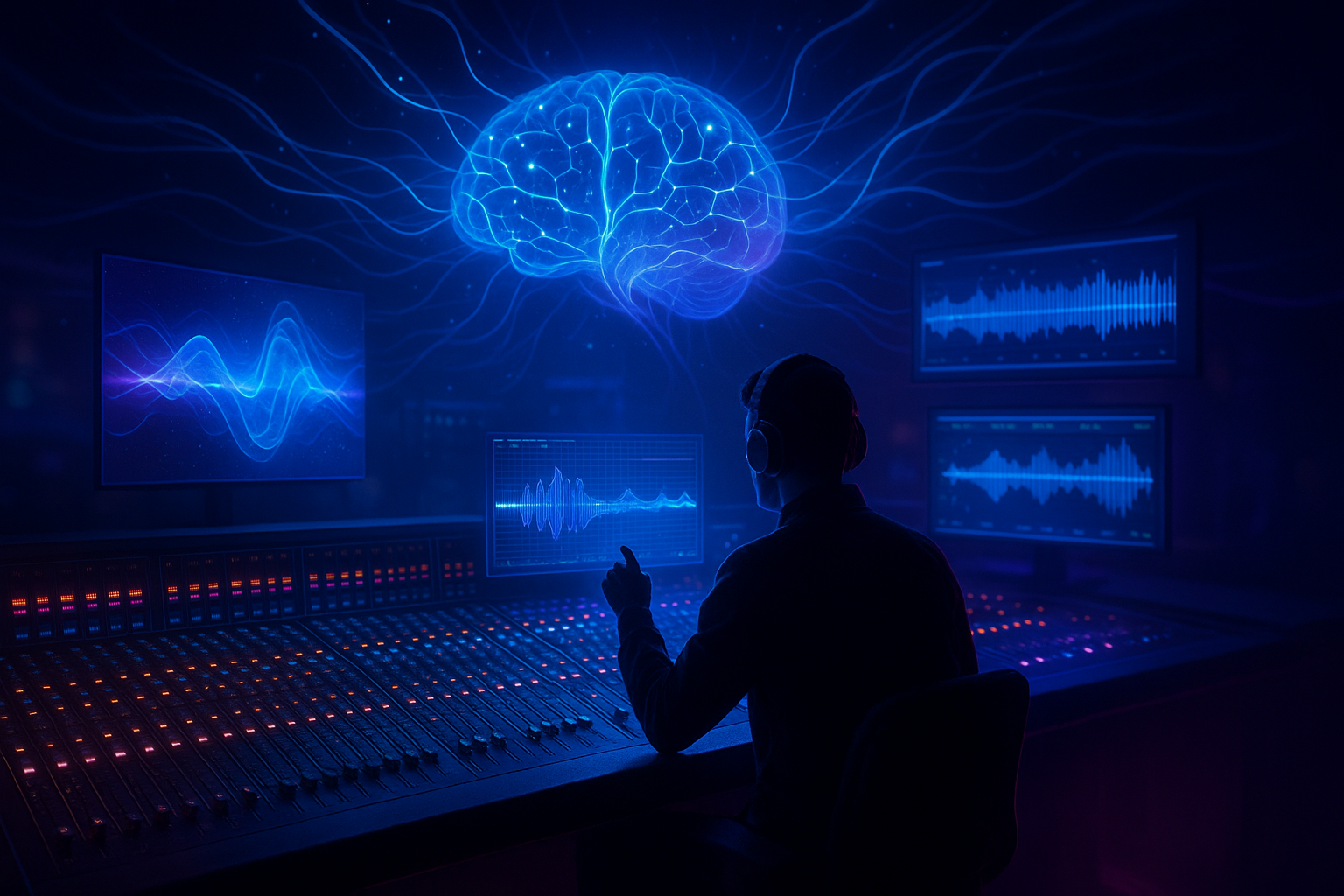
AI in Music Production: Beyond Songwriting – The Professional’s Guide to Sound Design, Mixing, and Mastering
While AI-generated melodies and lyrics have dominated headlines, the real revolution in music production is happening in the technical trenches. Today’s AI tools are transforming how professionals approach sound design, mixing, and mastering—offering capabilities that were unimaginable just a few years ago. From neural networks that can separate stems with surgical precision to AI assistants that master tracks to commercial standards, we’re witnessing a fundamental shift in music production workflows.
This deep dive explores how AI is being deployed in professional studios today, evaluates the leading tools in each category, and provides practical insights for producers looking to integrate these technologies into their workflow.
The New Frontier: AI-Powered Sound Design

How Professionals Are Using AI for Sound Design
Modern sound designers are leveraging AI to create entirely new sonic palettes. Rather than simply browsing preset libraries, they’re using neural synthesis to generate unique sounds that have never existed before. Film composers are using AI to analyze reference tracks and generate custom sound effects that perfectly match the emotional tone of a scene. Game developers are implementing procedural audio systems that create dynamic, context-aware soundscapes in real-time.
The key breakthrough has been spectral modeling—AI systems that can understand the fundamental characteristics of sound at a granular level. This allows for transformations that preserve the essential character of a sound while dramatically altering its timbre, texture, or temporal characteristics.
Leading AI Sound Design Tools
| Tool | Primary Function | Key Features | Price Range | Best For |
|---|---|---|---|---|
| Synplant 2 | AI-powered synthesizer | Genopatch technology, sound breeding, DNA manipulation | $149 | Experimental sound designers |
| IRCAM Lab The Snail | Frequency analysis & manipulation | Real-time tuning, spectral analysis, detuning effects | $99 | Precision tuning and spectral work |
| Output Arcade | AI-assisted sample manipulation | Intelligent loop matching, AI-powered effects chains | $10/month | Electronic producers, beat makers |
| Native Instruments Kontour | Phase vocoding synthesis | AI-guided resynthesis, spectral morphing | $199 | Film scoring, ambient production |
| Sonible smart:reverb | Intelligent reverb design | AI frequency shaping, adaptive reverb tails | $129 | Mix engineers, post-production |
Professional Implementation
At Abbey Road Studios, engineers have integrated AI-powered spectral repair tools into their restoration workflow, using machine learning to remove unwanted artifacts from vintage recordings while preserving the original character. Meanwhile, Hans Zimmer’s team has been experimenting with neural synthesis to create otherworldly textures for film scores, training custom models on orchestral recordings to generate hybrid organic-synthetic sounds. According to Music Radar’s coverage of AI in professional studios, major facilities worldwide are reporting efficiency gains of 30-50% in technical tasks while maintaining creative quality.
Mixing Revolution: AI as Your Assistant Engineer
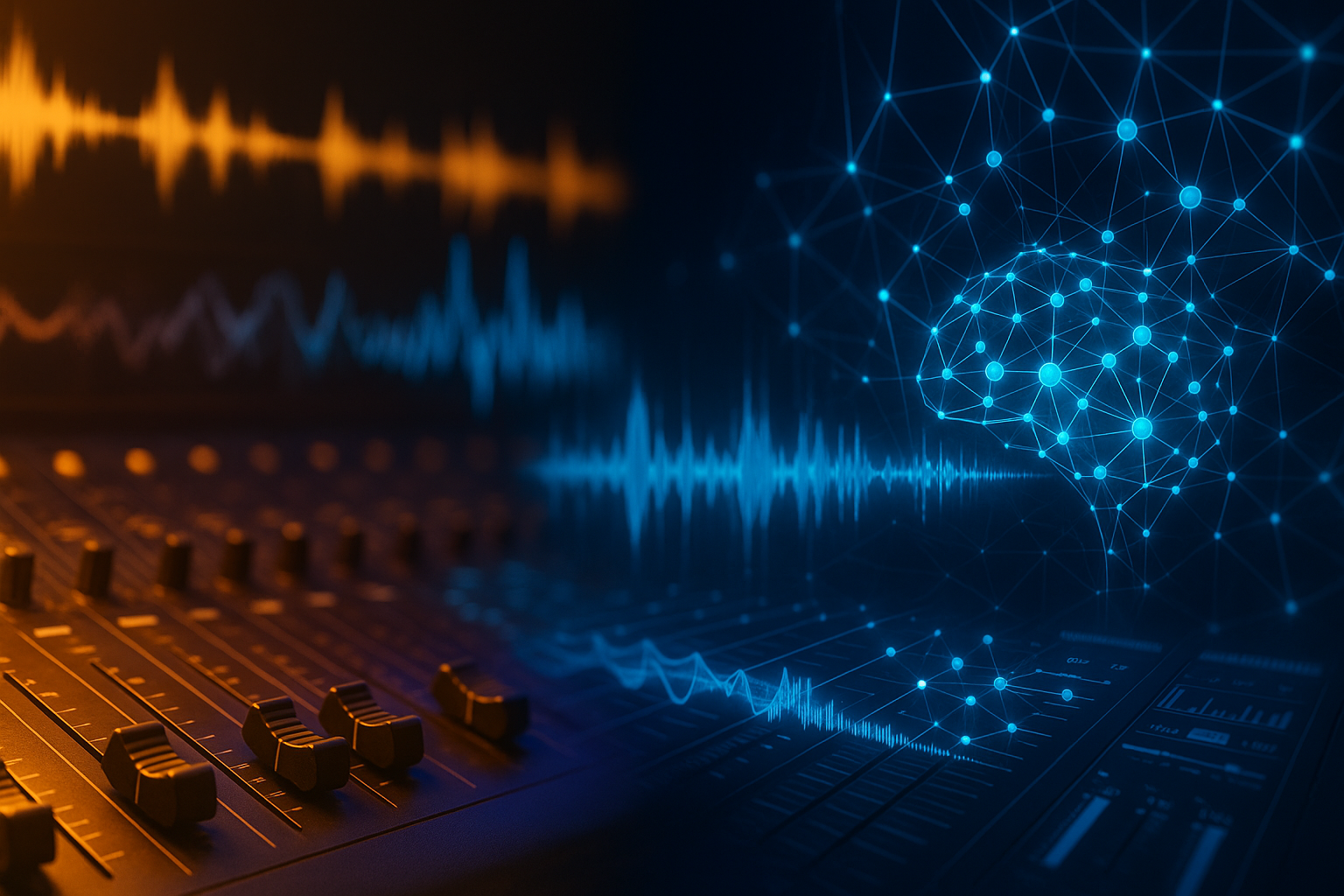
The Current State of AI Mixing
AI mixing tools have evolved from simple preset matchers to sophisticated systems that understand musical context, genre conventions, and psychoacoustic principles. These tools don’t replace the mixing engineer—they augment their capabilities, handling routine tasks and providing intelligent starting points that can be refined with human creativity.
Professional mixing engineers are using AI for:
- Intelligent EQ curve matching and correction
- Automatic gain staging and balance optimization
- Dynamic range management across multiple tracks
- Spatial positioning and stereo field optimization
- Identifying and resolving frequency masking issues
Top AI Mixing Solutions Compared
| Tool | Specialization | Learning Curve | Integration | Price | Unique Advantage |
|---|---|---|---|---|---|
| iZotope Neutron 4 | Complete mixing suite | Moderate | VST/AU/AAX | $399 | Mix Assistant with genre-specific profiles |
| Sonible smart:comp 2 | Intelligent compression | Low | VST/AU/AAX | $129 | Spectral compression with AI guidance |
| FabFilter Pro-Q 3 | AI-assisted EQ | Moderate | VST/AU/AAX | $179 | Intelligent solo feature, collision detection |
| Waves Clarity Vx Pro | Vocal processing | Low | VST/AU/AAX | $149 | Neural network noise removal |
| SSL Native X-EQ 2 | AI-enhanced analog modeling | Low | VST/AU/AAX | $199 | Anti-cramping technology with AI assistance |
Real-World Applications
Mix engineer Andrew Scheps has incorporated AI tools into his workflow for initial balance and EQ decisions, using them to quickly achieve a baseline mix that he then refines with analog gear. Similarly, Sylvia Massy uses AI-powered stem separation to create “impossible” remixes of classic tracks, extracting and reprocessing individual elements that were previously locked in stereo mixes.
Mastering: Where AI Truly Shines
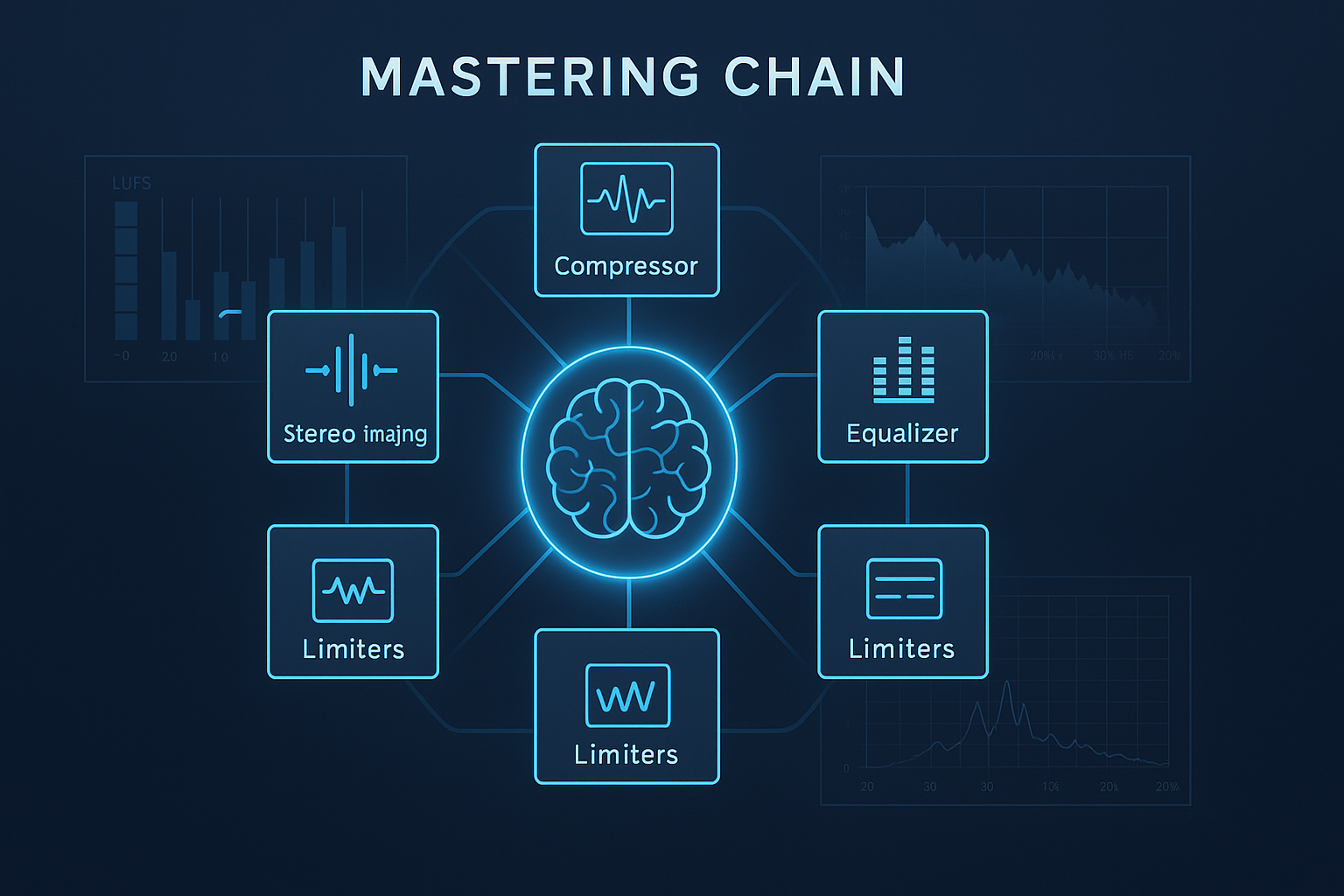
AI Mastering Capabilities
Mastering is perhaps where AI has made the most dramatic impact. Modern AI mastering engines can analyze thousands of reference tracks, understand loudness standards across different platforms, and apply complex chains of processing that adapt to the source material in real-time. These systems consider factors like:
- Genre-specific frequency curves and dynamics
- Platform-specific loudness targets (Spotify, Apple Music, CD, vinyl)
- Codec behavior and lossy compression artifacts
- Perceptual loudness versus measured LUFS (as detailed in the AES Technical Standards)
- Tonal balance across the frequency spectrum
Professional AI Mastering Platforms
| Service/Tool | Processing Type | Turnaround | Customization | Price Model | Professional Features |
|---|---|---|---|---|---|
| LANDR | Cloud-based AI | Instant | High | $25/month unlimited | Reference track matching, stem mastering |
| iZotope Ozone 11 | Local AI-assisted | Real-time | Very High | $499 | Master Assistant, vintage module modeling |
| CloudBounce | Cloud-based AI | 90 seconds | Moderate | $9.90/track | Genre-specific algorithms, multiple formats |
| eMastered | Cloud-based AI | Instant | Moderate | $39/month | Grammy-winning engineer training data |
| Waves L3-LL Multimaximizer | Local AI-enhanced | Real-time | High | $299 | PLMixer technology, intelligent release control |
| Plugin Alliance ADPTR Master Suite | Local AI-assisted | Real-time | Very High | $199 | Perceptual loudness matching, streaming prep |
Case Studies from the Industry
Abbey Road Studios has begun offering AI-enhanced mastering services where their engineers work in tandem with machine learning systems to achieve optimal results faster than traditional methods. The AI handles the technical optimization while engineers focus on creative decisions and quality control.
Grammy-winning mastering engineer Emily Lazar has integrated AI tools into her workflow at The Lodge, using them for A/B comparisons and to quickly generate multiple master variations for client review. She reports that AI has reduced technical setup time by 40%, allowing more focus on creative refinement.
The Integration Challenge: Workflow Considerations

Building an AI-Enhanced Studio
Successfully integrating AI into professional workflows requires careful consideration of:
- Processing Power: Many AI tools require significant CPU/GPU resources
- Latency Management: Real-time AI processing can introduce latency
- Training and Adaptation: Time investment to understand AI behavior
- Quality Control: Maintaining critical listening despite automation
- Client Education: Explaining AI’s role in the creative process
Hybrid Approaches
The most successful implementations combine AI efficiency with human creativity. For example:
- Using AI for initial rough mixes, then refining with traditional tools
- Applying AI mastering as a reference point before final human adjustments
- Leveraging AI for technical tasks while maintaining creative control
- Implementing AI for quality control and consistency checking
Looking Ahead: The Next 18 Months
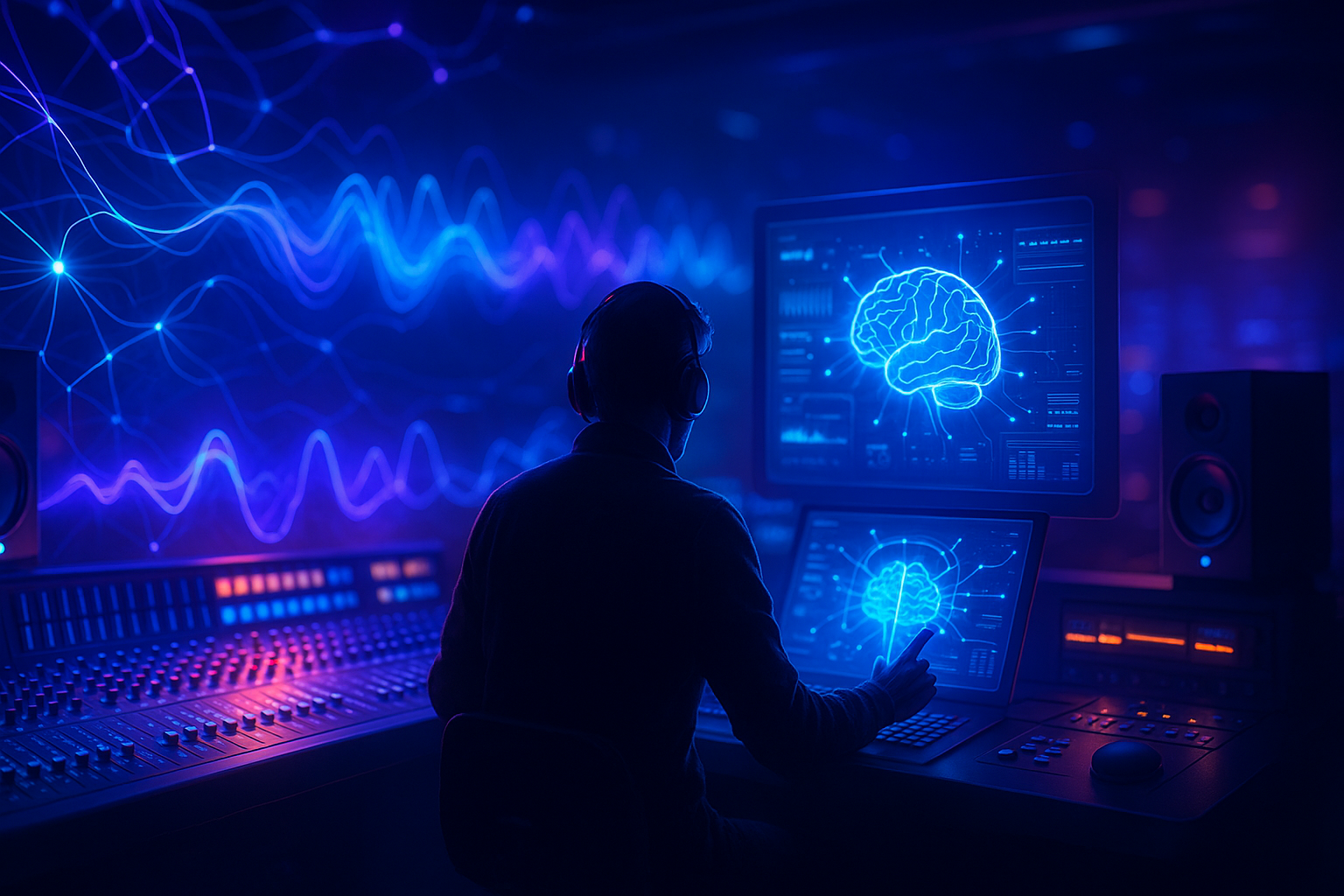
Emerging Technologies
Several breakthrough technologies are on the horizon:
- Neural Audio Codecs: AI compression that maintains quality at extremely low bitrates
- Real-time Style Transfer: Apply the mixing style of famous engineers to any track
- Contextual Processing: AI that understands musical structure and adjusts processing accordingly
- Collaborative AI: Systems that learn from your decisions and adapt to your style
- Spatial Audio AI: Intelligent Dolby Atmos and binaural mixing assistants
Industry Predictions
Based on conversations with leading developers and producers:
- 60% of commercial releases will use some form of AI processing by 2026
- AI will become standard in broadcast and streaming platform compliance
- Custom-trained AI models will become a differentiator for top studios
- Real-time AI processing will eliminate the need for rendering in many workflows
Practical Recommendations
For Beginners
Start with cloud-based services like LANDR or eMastered to understand AI’s capabilities without significant investment. Focus on using AI as a learning tool—analyze what changes the AI makes and why.
For Intermediate Producers
Invest in one comprehensive suite (like iZotope’s Music Production Suite) and thoroughly explore its AI features. Use AI for technical tasks while maintaining creative control over artistic decisions.
For Professionals
Integrate AI tools strategically for efficiency gains. Consider training custom models on your signature sound. Use AI for rapid prototyping and client previews while maintaining traditional workflows for final delivery.
The Bottom Line: Augmentation, Not Replacement
AI in music production has evolved far beyond novelty. Today’s tools offer genuine value to professionals, handling technical complexity while preserving creative freedom. The key isn’t choosing between AI and traditional methods—it’s understanding how to leverage both for optimal results.
As we move forward, the most successful producers won’t be those who resist AI or those who rely on it entirely, but those who thoughtfully integrate these tools into their creative process. The future of music production isn’t about replacement—it’s about augmentation, efficiency, and pushing creative boundaries further than ever before.
The revolution isn’t coming. It’s here. The question is: how will you use it to enhance your unique creative voice?
Have you integrated AI into your production workflow? Share your experiences in the comments below, and let us know which tools have made the biggest impact on your creative process.
AI Guides
History of AI – From the 1950s to Present
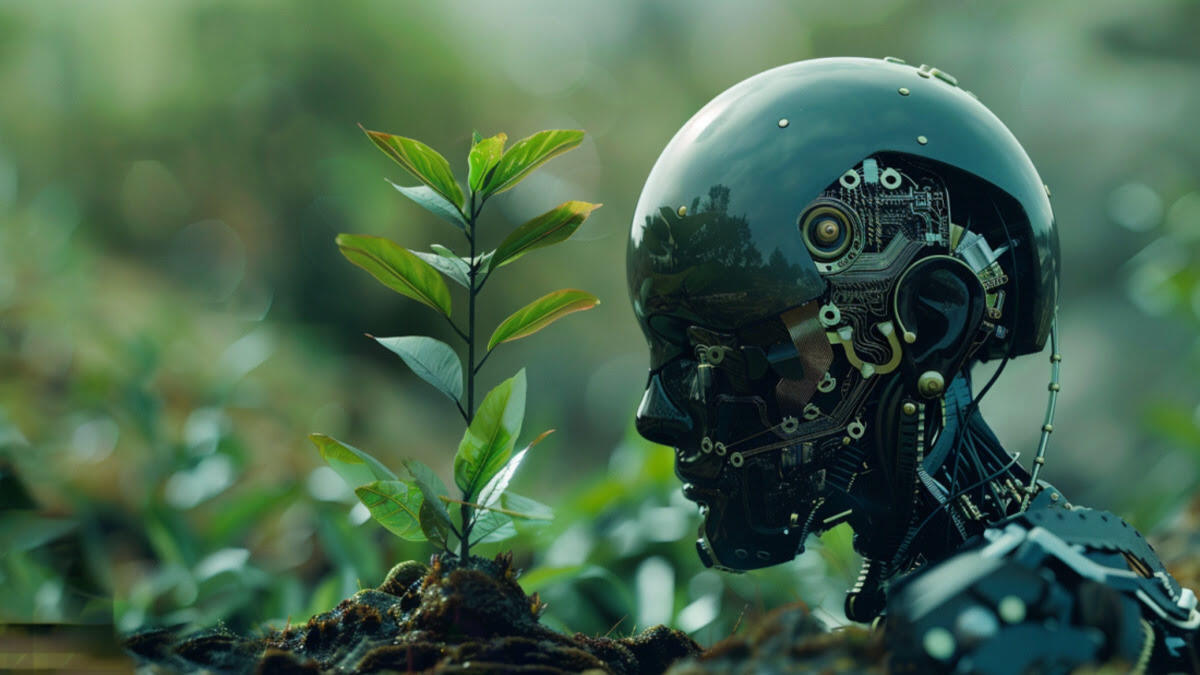
Artificial Intelligence (AI) might seem like a concept straight out of a modern sci-fi movie that entered our lives in the past couple of years, but did you know that the idea has been around for centuries?
In this article, we’ll dive into the history of AI, tracing its origins and major milestones. Continue reading to the end to discover how AI has evolved through history.
The Early Imaginings and Theoretical Foundations
Long before the term “artificial intelligence” was coined, humans dreamed of creating intelligent machines. Ancient myths and stories from various cultures feature mechanical beings endowed with intelligence, showcasing early human fascination with mimicking life through machinery. For instance, in Greek mythology, Hephaestus, the god of craftsmanship, created mechanical servants.
Fast forward to the 17th and 18th centuries during the Enlightenment, when philosophers and mathematicians like René Descartes and Gottfried Wilhelm Leibniz began pondering the possibility of machines thinking like humans. They discussed the human mind in terms of a complex machine, laying the groundwork for computational thinking.
The Formal Birth of AI (1950s – 1960s)
The actual term “Artificial Intelligence” was first used in 1956 by John McCarthy, a young assistant professor at Dartmouth College, who organized a pivotal conference – now considered the birth of AI as a field of study.
This event, known as the Dartmouth Summer Research Project on Artificial Intelligence, brought together researchers interested in neural networks, the study of intelligence, and the possibility of replicating human thought in machines.
During this era, AI research received significant attention and funding. Early successes included programs that could perform algebraic equations and play checkers at a high level. These developments led to optimistic predictions about AI’s future, setting high expectations for rapid progress.
The First AI Winter (1970s)
Despite early enthusiasm, progress in AI research did not keep pace with expectations. By the mid-1970s, the limitations of existing AI technology became apparent, leading to the first AI Winter, a period marked by reduced funding and waning interest in AI research. This downturn was largely due to the overly ambitious expectations that could not be met by the technology of the time, which struggled with real-world applications.
The Resurgence and Rise of Machine Learning (1980s – 1990s)
AI experienced a resurgence in the 1980s, thanks in part to the adoption of machine learning. Instead of trying to directly encode AI with extensive knowledge and rules about the world, researchers focused on creating algorithms that could learn from data.
This shift was significant, leading to more robust and adaptable AI systems. The introduction of backpropagation by researchers such as Geoffrey Hinton allowed neural networks to learn from their errors, improving their performance over time.
During this period, governments and industries began investing heavily in AI again, intrigued by its potential applications. AI started to be used for logistics, data management, and within expert systems in fields like medicine and engineering, marking its transition from a purely academic pursuit to a practical tool in business and other areas.
By the late 1990s, the internet boom provided AI researchers with unprecedented amounts of data and a new platform to deploy AI technologies. This period led to significant advancements in algorithms and the capability of AI systems to handle tasks involving big data, marking another turning point in the AI development timeline.
As we continue exploring the evolution of AI, we will see how the 21st century brought AI into our daily lives, making it an indispensable tool in various sectors, from healthcare to entertainment. Stay tuned as we uncover more about how AI continues to evolve and shape our world in ways we could hardly imagine just a few decades ago.
AI in the 21st Century: Expansion into Daily Life and Beyond
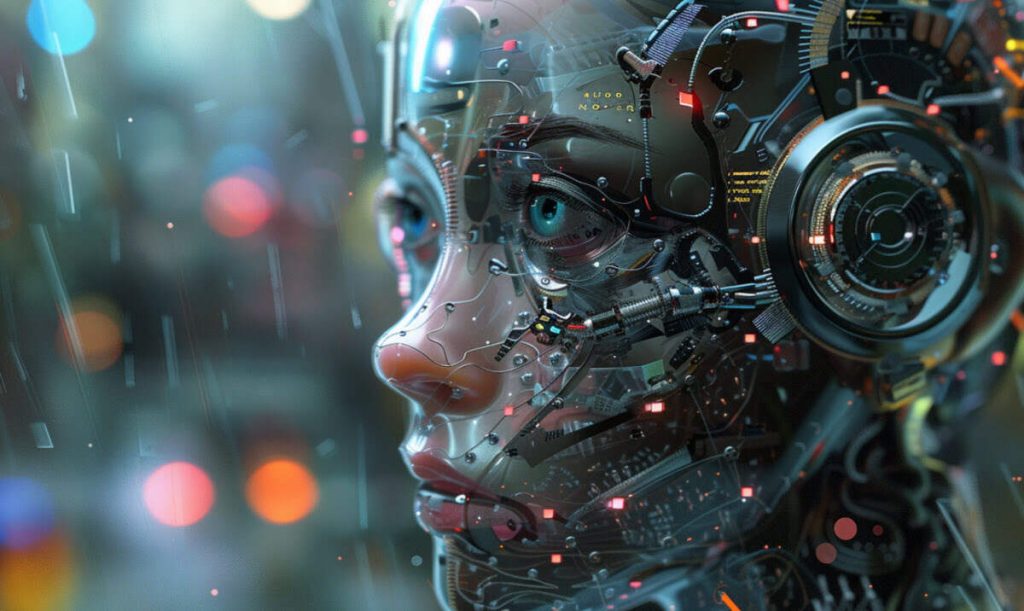
As the new millennium unfolded, AI’s integration into daily life and various sectors accelerated at an unprecedented pace. The development of sophisticated machine learning models, particularly Deep Learning, has enabled AI to analyze and generate large volumes of data with astonishing accuracy.
This section of our journey through the history of artificial intelligence will explore how AI has become a ubiquitous part of modern life.
Deep Learning and Big Data
The 2000s witnessed a major breakthrough with the advent of deep learning techniques, which involve neural networks with many layers that can learn increasingly abstract features of data. These networks were fueled by the explosive growth of “big data” generated by the digital activities of businesses and consumers alike.
Companies like Google, Amazon, and Facebook began using deep learning to improve products and services, from enhancing search algorithms to personalizing advertisements, thereby making AI an integral part of the tech industry’s infrastructure.
AI in Consumer Technology
Perhaps the most relatable example of AI for most people is its role in consumer technology. Virtual assistants like Apple’s Siri, Amazon’s Alexa, and Google Assistant use AI to understand and respond to voice commands, providing users with information, entertainment, and assistance with daily tasks.
The seamless integration of AI into smartphones and home devices has dramatically changed how people interact with technology, making AI a helpful companion in our everyday lives.
Autonomous Vehicles
Another significant area of AI development is in autonomous vehicles. Companies like Tesla, Waymo, and Uber have invested heavily in AI systems that can safely navigate roads without human intervention. These vehicles use AI to process inputs from various sensors and cameras, making split-second decisions that can adapt to complex traffic environments and driving conditions.
AI in Healthcare
AI’s impact on healthcare has been profound, offering tools for diagnosis, personalized medicine, and patient management. AI algorithms can analyze medical images with accuracy that matches or exceeds human radiologists.
Additionally, AI is used to predict patient outcomes, personalize treatment plans, and manage healthcare records more efficiently, significantly improving the quality of care and operational efficiencies in healthcare facilities.
How AI Continues to Shape Our Future
The journey of AI from a concept in myths to a key player in major industries shows its vast potential and inevitable growth. As AI technology continues to evolve, its capabilities will likely become more sophisticated, leading to even more innovative applications across different sectors.
Ethical Considerations and Future Challenges
However, the rapid growth of AI also brings challenges, particularly ethical considerations like privacy, security, and the impact of automation on employment. The future of AI will likely focus not only on technological advancements but also on addressing these ethical issues, ensuring that AI benefits society as a whole.
The Road Ahead
Looking forward, the integration of AI in more complex tasks and its potential to understand human emotions and make morally significant decisions are areas of intense research and interest. The journey of AI is far from over; it is evolving every day, promising a future where AI and humans coexist, complementing each other’s capabilities.
Conclusion
The history of artificial intelligence is a fascinating tale of human ingenuity and technological advancement. From early automata to sophisticated AI that permeates every aspect of our lives, AI’s journey is a testament to the relentless pursuit of knowledge and understanding by scientists, engineers, and thinkers across generations.
As we stand on the shoulders of these pioneers, we look forward to a future where AI continues to enhance our abilities and enrich our lives.
AI Guides
Why Can’t AI Art Make Hands

Artificial Intelligence (AI) has made significant strides in many fields, and art creation is no exception. AI art generators, like those powered by machine learning models such as DALL-E or GANs (Generative Adversarial Networks), can create stunning images that dazzle the imagination.
These tools are used for everything from generating abstract art for digital spaces to crafting backgrounds for games and virtual realities. Despite their capabilities, these AI systems often struggle with a peculiar challenge: drawing human hands accurately.
Our article will explain why AI art generators frequently produce hands that look awkward, distorted, or downright eerie, and why hands are a particularly tough challenge for AI. Read on to know why AI finds hands so difficult to get right, and why this matters more than you think for the future of AI-generated art.
Why AI Struggles With Generating Human Hands
Human hands are one of the most complex and detailed parts of the body, involving a wide range of motions and configurations that can express a multitude of gestures and actions. This complexity presents a significant challenge for AI image generators, not just for one but for several reasons.
Below, you’ll find why AI art generators struggle with drawing hands.
High Variability
Hands are highly variable in their appearance and position. They can interact with numerous objects, appear in countless poses, and each hand gesture can convey different emotions or actions.
For AI, which learns from a dataset of existing images, the immense variability of hand positions and their interactions with other objects can lead to a lack of comprehensive learning material. As a result, the AI often struggles to accurately recreate hand positions that it hasn’t encountered frequently in its training set.
Intricate Detailing
The structure of a hand is intricate, with fine detailing in the knuckles, nails, and skin texture. Each of these details needs to be rendered accurately for a hand to look realistic.
AI systems typically generate images based on patterns they have learned from data; if the details in the training images are not diverse or detailed enough, the AI will have difficulty replicating them accurately. This often results in hands that look flat, malformed, or overly simplified.
Complex Interactions
Hands are rarely seen in isolation; they are usually interacting with objects or other parts of the body. This interaction adds a layer of complexity to the image generation process.
AI must not only generate the hand but also understand and replicate how it interacts with its environment. This requires an understanding of physics, space, and object dynamics, which are challenging for AI to learn completely.
Data Limitations
The quality of the data used to train AI significantly impacts its output. If the dataset is not diverse enough or lacks high-quality images of hands in various poses and interactions, the AI will struggle to generate high-quality images of hands.
Moreover, biased or insufficient training data can lead to repetitive errors, such as consistently generating an incorrect number of fingers or unrealistic hand shapes.
Other Parts of the Human Body AI Struggles to Generate

While AI’s difficulties with generating realistic human hands are well-documented, this challenge extends to other complex parts of the human body as well. Features such as faces, feet, and hair also present significant hurdles for AI image generators.
The reasons for these struggles often overlap with some of those seen in hand generation. Let’s explore why AI particularly struggles with these features.
Faces
The human face is a centerpiece of identity and expression, involving subtle micro-expressions that convey a wide range of emotions, from joy to sorrow. AI often struggles to replicate these nuances for several reasons:
- Complexity of Expressions: Human expressions involve small, often rapid changes in facial muscles. AI systems find it challenging to capture these nuances accurately because they require an understanding of how muscles interact and how expressions change dynamically over time.
- Symmetry and Proportions: Human faces have a specific symmetry and proportion that can be difficult for AI to replicate accurately. Even slight deviations in symmetry or proportions can make a face look unnatural or unsettling.
- Eye Detailing: The eyes are particularly expressive and detailed parts of the face. AI systems often struggle to render the depth and sparkle of human eyes, which are critical for a face to appear lifelike and relatable.
Feet
Like hands, feet are complex structures that involve many small bones, joints, and types of movements. AI struggles with feet for similar reasons:
- Variability in Position: Feet can appear in numerous positions depending on the body’s actions, such as standing, running, or resting. Capturing these positions accurately, along with the associated shadows and textures, is challenging for AI.
- Interaction with Surfaces: Feet often interact with various surfaces, which can affect their appearance. AI must understand and replicate these interactions, such as the flattening of the soles when standing or the arching of the toes when walking, which is a complex task.
Hair
Hair presents another significant challenge for AI due to its fluid and dynamic nature:
- Texture and Flow: Hair has different textures and styles that can change with movement and environmental conditions, such as wind or humidity. AI systems often struggle to generate hair that looks natural and flows realistically.
- Volume and Light Interaction: Accurately rendering how hair volumes interact with light and shadow is complex. Hair also has varying degrees of transparency and reflectivity, which are difficult for AI to replicate, often resulting in hair that looks either too heavy or too light.
All of these features require a deep understanding of human anatomy, the physics of light and materials, and the subtleties of human expression, all of which are areas where AI still has room for improvement.
As AI technology evolves, the ability to handle these complex human features with greater accuracy will continue to grow, driven by advances in machine learning models, increased computational power, and more extensive training datasets.
These improvements will help AI overcome its current limitations, allowing for more realistic and nuanced representations of human features in digital art and other applications.
How to Help AI Get Human Features Right
If you’re using AI and tired of it not getting parts of the human body right, there are a few things you can do to fix this – or at least make it easier for the AI to generate better-looking images.
Here are several practical steps that can help improve the accuracy of AI-generated human features:
Use High-Quality, Detailed Images
The quality of images used in training datasets significantly impacts AI’s output. High-resolution images that show detailed features of hands, facial expressions, and interactions can provide the AI with a better understanding of subtle details. This is particularly crucial for intricate parts like the texturing of skin, the way light plays on muscle, or the specifics of hand positioning.
Implement Advanced Modeling Techniques
Employing advanced neural network models that focus on depth and texture can aid in generating more realistic human features. Techniques such as Generative Adversarial Networks (GANs) have been particularly successful in creating photorealistic images. These models learn to simulate fine details more accurately by pitting two neural networks against each other: one generates images; the other evaluates their realism.
Community Feedback
The AI development community can be a tremendous resource. Platforms like Reddit often feature discussions where users share their experiences with different AI tools, providing insights into common issues and potential solutions. By engaging with these communities, you can find solutions to your common problems with AI-generated images.
AI Is Getting Better at Generating Images Every Day

Despite the current challenges, AI technology is improving rapidly, and the quality of images it can generate is getting better every day. Developers are continually working on refining AI algorithms, expanding training datasets, and incorporating user feedback into the development process. These efforts are gradually overcoming the difficulties AI faces with complex human features like hands, faces, and hair.
Several AI tools are already making significant strides in this area. For instance, newer versions of AI image generators have begun to show improved capability in handling human anatomy with greater accuracy. These advancements suggest a promising future where AI can not only match but potentially exceed human capabilities in creating detailed, realistic images.
As AI continues to evolve, it holds the potential to transform artistic creation, offering tools that augment human creativity with digital precision. For artists, designers, and creators, these developments signal exciting new possibilities for collaboration between human imagination and AI efficiency, opening up a world of creative opportunities that were once thought impossible.
-

 AI Guides2 years ago
AI Guides2 years agoGPT-4 vs. GPT-4o: Key Differences
-
Uncategorized4 months ago
10 Best AI Productivity Tools for 2025 [Tested]
-
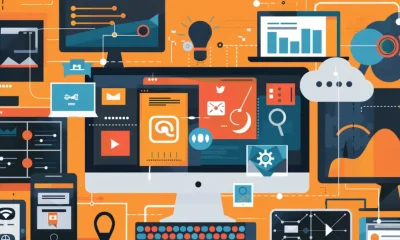
 AI Tool Reviews2 years ago
AI Tool Reviews2 years ago10 Best Free AI Websites
-

 AI for Investment2 years ago
AI for Investment2 years agoHow to Use AI for Stock Trading
-

 AI for Entertainment2 years ago
AI for Entertainment2 years agoAI Predicts for Super Bowl Winners 2024 to 2099 – Surprising Results
-
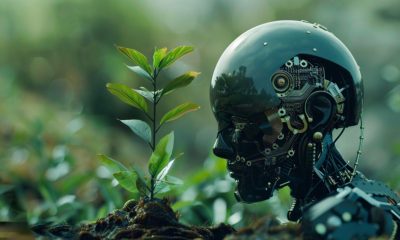
 AI Guides2 years ago
AI Guides2 years agoHistory of AI – From the 1950s to Present
-

 AI Guides2 years ago
AI Guides2 years agoCurrent Limitations of Artificial Intelligence
-

 AI Tool Reviews2 years ago
AI Tool Reviews2 years ago10 Best AI Song Generators (Including Free Options)

